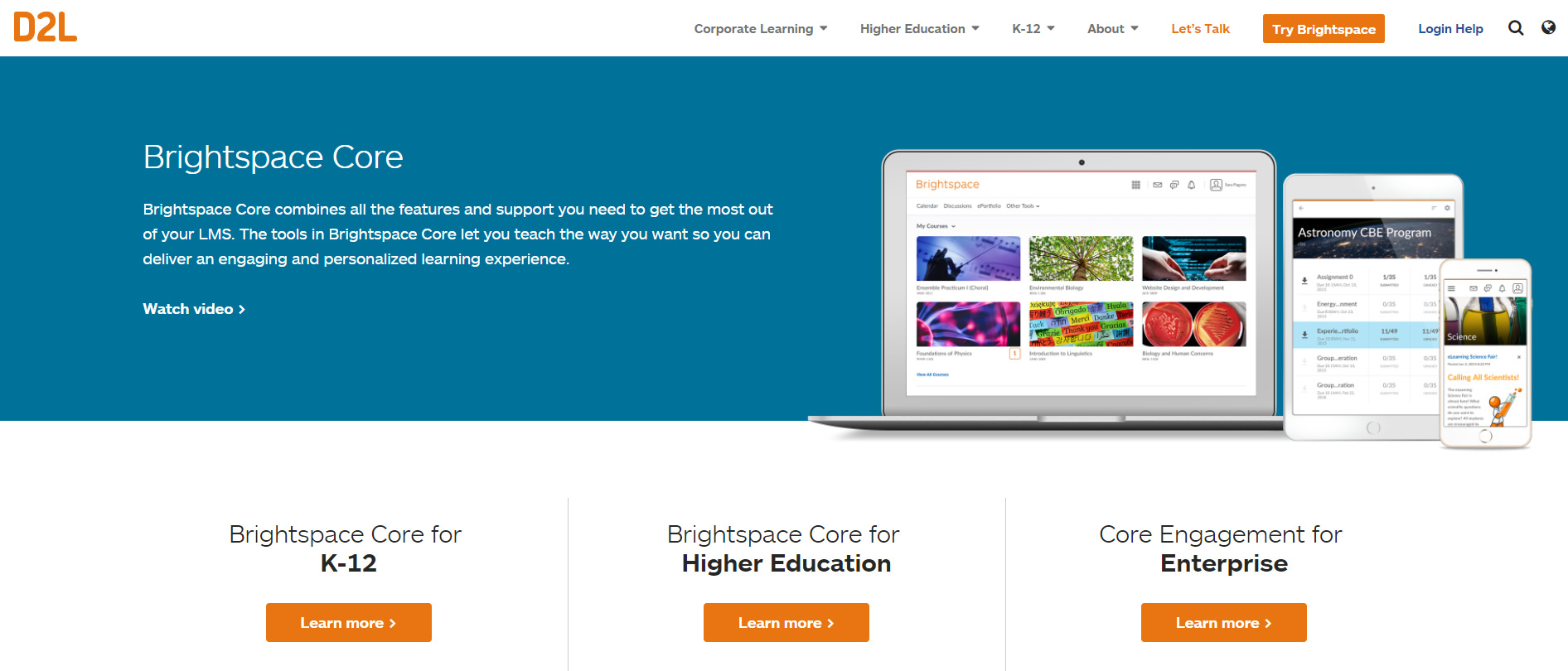One LMS is Changing the Way Children Learn in Canada
One of the most appealing aspects of using an LMS is the versatility that comes with it. Many systems are adaptable, which means they are effective whether you’re training hundreds of new hires or a classroom of young students. The District School Board of Niagara in Ontario has proven that point by introducing Brightspace LMS into their curriculum.
What is Brightspace LMS?
Brightspace LMS was developed by Desire2Learn (D2L). The company markets its eLearning platform with three target audiences in mind: schools serving grades K through 12, higher education institutions, and businesses. D2L’s broad customer base speaks to the versatility of their product. Children can learn with fun games that include colorful characters and the basic concepts they need to grow. At the same time, colleges and corporations can distribute content that covers complex topics with a professional UI.
One of the strengths built into Brightspace LMS is the focus on personalized learning. Educators can tailor content to the needs of each classroom, whether they are teaching very young children or older students.
Why Switch From the Old Way of Teaching?
Some schools are reluctant to invest in ed tech, and it’s easy to see why. Many operate on tight budgets and cannot risk wasting funds on something that may not be a good fit for students. Teachers at the District School Board of Niagara noticed a growing problem with using a collection of free or low-cost tools over a centralized system.
“Students used to get frustrated with navigation, getting to certain sites in weird convoluted ways to handle folders in Dropbox,” explains blended-learning resource teacher Robert Dunlop.” Now, with D2L, we take out all that navigation and replace it with pedagogy. That allows us to do more small-group instruction and feedback. It really changes the efficiency.”
Brightspace LMS has transformed into an educational hub for the school district. The system is primarily utilized for teaching older students, like those at Montana State University, Minnesota State University, and Kennesaw State University. It still manages to provide a powerful solution that works well in the hands of children and their teachers.
Public Schooling Goes Online
The District School Board of Niagara serves approximately 43,000 students across 18 secondary schools and 97 elementary schools. The DSBN online campus, which is also managed by D2L, provides an opportunity for high school students to work through self-paced classes. They can take tests or participate in discussion boards with their fellow pupils. The system also includes instant messaging and email for faster interaction between learners and educators.
The popularity of DSBN is growing, with an adoption rate that is up to 80% and includes nearly 30,000 users. Dunlop explained the reason behind the success by identifying the problems teachers used to have, especially when it comes to communication.
“It’s that idea of looking at what teachers are struggling with and then figuring out what platform we can use, and because D2L is so broad and has so many tools, teachers love that they’re not using multiple tools. They can simply use D2L to do all their communication and online discussion.”
D2L takes things a step further by bringing parents into the fold. Students can communicate with their educators and their parents through the platform. During a time when many believe that technology has torn a rift between generations, this is a great opportunity to help busy families stay informed and in communication.
A new parent portal will be added in September 2017 that will allow families to register usernames with passwords so that they can login and participate as well. It’s a big step up from sending notes home in book bags or trying to reach parents through a phone call during work hours. It also makes life easier for moms and dads with more than one child because they will be able to use one login to access information and content for all their children.
The development team rolled out another powerful feature this past August called ePortfolio. This documentation tool allows learners to link to their student account through a mobile device. They can record their educational experience, create presentations, and display course content and media. It also creates an opportunity to document activities on field trips, when doing a student exchange, or when participating in any other out-of-classroom activities.
The system will take a photo of the student’s work which can be sent to their teacher. The teacher can approve the work or reject it if a mistake is made. They can also send the student’s content to parents to show them what their child is doing and how well they are performing. It puts documentation in the hands of students as well as teachers.
eLearning is a Growing Trend for All Ages
eLearning completely changes the way we teach at all stages of life, from kindergarten all the way up through the corporate ladder. More schools are discovering the benefits of an LMS and making the change from paper and pencil to digital education. D2L currently serves a number of schools including Harriett Tubman Public School in St. Catharines, Ontario, Bishop Hall Charter School in Thomasville, Georgia and St. Stephens College, a Prepatory to Year 12 school in Australia.
Joanna Nikkel, a kindergarten teacher at Harriett Tubman Public School, explained “I am very, very passionate about parent engagement and I think Brightspace has opened up an opportunity to strengthen the relationship between parent and teacher, parent and school, and parent and child. That’s why I love Brightspace so much.”
Parent Lisa Passero mirrored Nikkel’s sentiment: “I feel like I just know what’s going on when my son goes to school. It sometimes makes me feel like a fly on the wall that I can actually know what he’s doing and what he’s learning and be up to date. I can tell where he’s struggling. I can tell just what he’s doing. It’s just so nice to be able to have all of that at my fingertips, literally.”
The LMS concept is catching on in schools all over the world. While there are plenty of products that focus on corporate clients, some have emerged that offer a solution for elementary and high school settings. Textbook publisher Pearson introduced three of its own, including Online Learning Exchange, Pearson SuccessNet, and SuccessNet Plus. Other K-12 school friendly products include Haiku Learning, Blackboard, and open-source platform Moodle. Better tools and technology means a more positive school experience for students as well as their parents and teachers.








